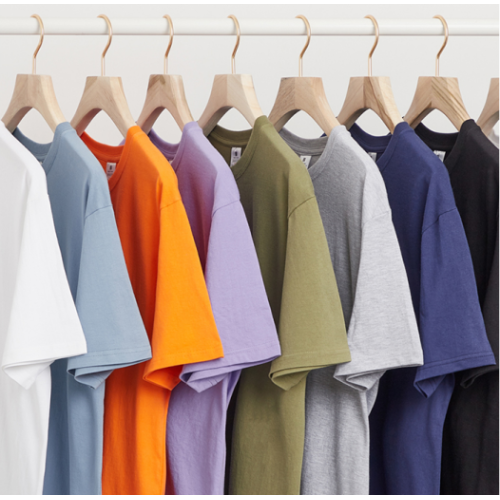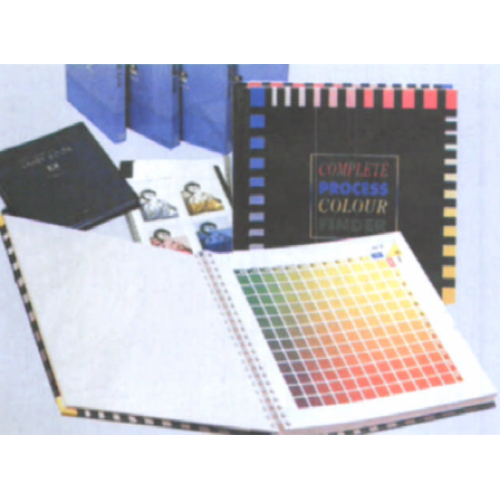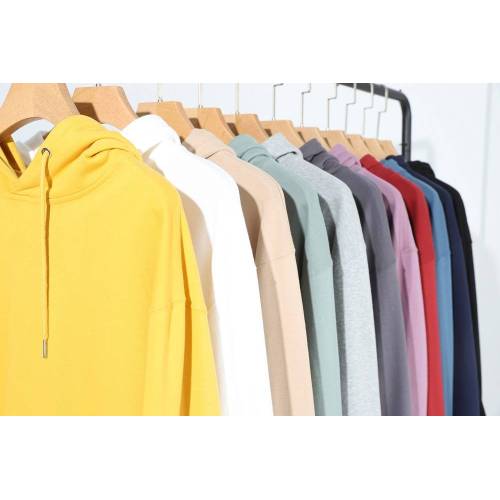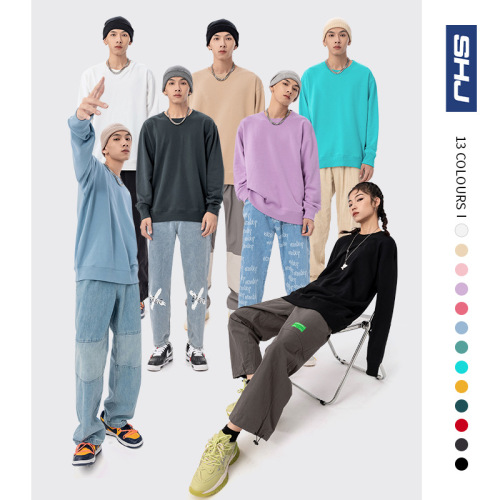First, the basics of T-shirt design
T-shirt design (pattern design) is divided into active design and passive design. Active design is mainly used to produce T-shirts for merchandise. Designers can use subjective ideas without any restrictions. Basically, any object or any graphic art technique can be used to create T-shirt designs. Passive design mainly refers to the creative design of advertising T-shirts, travel T-shirts, commemorative T-shirts, etc., subject to certain restrictions, to be carried out under the constraints of achieving certain intentions.
To carry out T-shirt design, one must first master the basic process of T-shirt printing, and also understand the printing technology level of the producer and the T-shirt printing equipment used. For example, T-shirts of colored fabrics are always printed with water-based glue paint, but if producers master the production technology of thermosetting plastic inks and purchase corresponding equipment (mainly T-shirt printing machines, infrared dryers, Infrared T-shirt oven, etc.), he can use hot solid ink to print color fabric T-shirts for processing. The glue printing and thermosetting ink printing have different requirements for the design of the pattern. The paste can only be printed with a simple color pattern. The hot ink can be printed with a transitional printing on the screen, not only on the white T-shirt. For color screen printing, spot color screen printing can also be performed on dark T-shirts. If the designer's design does not correspond to the technical process mastered by the producer, the printed design does not reach the designer's original intentions and effects, or even cannot be printed at all. Therefore, the T-shirt designer must be a master of the T-shirt printing process. In particular, the excellent T-shirt designer must be very concerned about the development status and technical characteristics of the latest T-shirt printing materials and printing equipment in the world so that Fast speed uses the latest scientific and technological achievements to produce novel and unique T-shirts.
In industrialized countries, T-shirt designers are often independent professionals. They founded their own T-shirt designers or companies and sold their own ideas and designs to customers such as T-shirt factories, T-shirt operators, and advertising companies. Such a T-shirt design company is often the first to consider three issues when designing: 1. The customer's requirements; 2. Using the latest T-shirt printing technology to achieve a unique artistic effect of color; 3. The best cost-profit rate.
Color-tone screen printing technology has also been gradually adopted in the past few years in the printing of printing inks. At the same time, the popularity and competition of computer desktop publishing systems have greatly reduced the cost of production of color separation screens. Now it is very convenient and inexpensive for us to create color separation and screening films. This progress is like the advancement from letterpress printing to offset printing in the printing industry. T-shirt designers have got rid of the design restrictions of the color pattern (except for glue printing) and have more creative space, regardless of photo effects or painting effects. Still inkjet effects can now be easily reproduced on t-shirts by screen printing technology. This is the progress of contemporary science and technology. At the same time, T-shirt designers are also asked to master digital technology.
Second , making a draft
The manuscript can also be called a black and white manuscript, a color separation manuscript, a negative plate, and so on. Its main function is to make sensitized prints. Therefore, the manuscript must be drawn on a light-transmissive substrate. The image is light-impermeable ink (black or red), the light transmission of the substrate and the shading of the ink layer. Density is a key indicator of the quality of the manuscript. The production of the manuscript draft mainly adopts methods such as manual drawing, manual or mechanical engraving, photocopying, laser photocopying, printer drafting, etc., but there are also methods for producing plain manuscripts after translucent treatment (such as oil). .
1. Separation
There are two main types of color separation: spot color separation and primary color separation.
Spot color separation refers to using any specially prepared color as a printing color alone, and such several spot colors are subjected to color printing to form a color image. Five sets of color printing and twelve sets of color printing, which we usually talk about, refer to the overprinting of five spot colors or twelve spot colors to form color image printing products.
However, the number of spot colors is not equal to the number of colors in the image, because spot colors can also be overprinted, so five spot colors can also print six or even seven colors and eight colors. Spot color printing is mainly used for color printing. Its reflection of natural scenes can only be simulated rather than reduced. This is the biggest difference from the original color printing. However, with the development of screen printing technology and the development of new types of ink, special color screen printing has risen rapidly in recent years. Especially in the printing of T-shirts, the most advanced T-shirt printing pattern in the world is currently the most advanced T-shirt printing technology. It is not the original color printing but the spot color screen printing, that is, the color special screen printing on the black T-shirt.
The primary color separation refers to the decomposition of the natural color image into three primary colors (magenta, cyan, and yellow) for the purpose of reducing the object image by performing the three-primary color price adjustment printing. Any color in the natural world is composed of three primary colors, so theoretically speaking, it is possible to print realistically restored images using the cyan, magenta, yellow, and three color plates, but due to various factors, the three primary color prints are difficult to achieve. This point. Therefore, four-color printing is usually used in printing practice, namely three primary colors plus black. In recent years, in order to restore the colors more vividly in the world, six-color printing and seven-color printing have been developed on the basis of four-color printing. The principle is to combine the colors of orange, purple, and green on a four-color basis. Separated to achieve high fidelity by reducing grayscale in printing. In order to differentiate from spot color printing, we usually refer to the original color printing (which can be understood as reducing color printing) by performing the color separation of natural color patterns by optical or digital technology. It is related to optics and color science. The concept of primary colors (only three primary colors) is different.
It is worth mentioning here that primary color printing and spot color printing are not incompatible. In the international community, the latest development of color printing is the combination of primary colors and spot colors for primary color printing, which has played both the strengths of both, complement each other, and has a more advanced printing effect, belonging to fine print. This has also been given permission to play in T-shirt printing. The author once saw a U.S.-made T-shirt with a total of 12 colors. In addition to the four primary colors, there are eight sets of spot colors. In addition to gold and silver and other colors, there are foam printing and crystal pulp printing. It's amazing not only that it has a strong sense of three-dimensionality, but also that it shines in a particular part.
Professional T-shirt designers usually design according to the principle of spot color or primary color. After obtaining such a design draft, they can perform color separation according to their requirements. However, there are also non-spotted designers or customers who only provide originals such as various pictures or drawings and require them to be printed on T-shirts. In this situation, we must communicate with designers and customers: First of all, we must understand their creative intentions and what kind of effect they want to express. Is it better to use spot-color printing or primary color printing to achieve this effect? Even the original color printing? At this time, it is necessary to provide them with T-shirts with different printing methods so that they can understand and select them. Secondly, they should tell them about the production cost of spot color printing and primary color printing so that they can make decisions based on their investment plans.
2. Separation of manuscripts
Separation of manuscripts is used to produce the corresponding separation screens. One of its quality requirements is that the light transmission performance of the substrate is good, the second is the high shading density of the image, and the third is the alignment accuracy between the dichroic sheets, and the edges of the image lines are clean and tidy, and the outlets are full and clear.
(1) Multi-color separations The positioning of cross-sections is generally based on crosshairs, but it is often easy to reverse the separations during the printing process, or to make mistakes on the front and back, or to turn the graphics upside down. We use left-rights. Right oblique method to position the crosshairs, that is, the left is +, the right is x, so that eliminate errors.
(2) Red tear film can be replaced with red self-adhesive paper because it is expensive and not easily available. As long as the red self-adhesive paste only on the PVC film (on the original or linework), you can use a carving knife to draw. Since the transparency of the red self-adhesive paper is far less than that of the red tear film, the light of the lighting drawing table should be brighter. In this way, you can achieve low prices, good shading effect, and clean lines, not afraid of water, even more wonderful is to modify the convenience - as long as the re-engraving can be removed, and red tearing can not be re-engraved, ink painting Only minor changes can be made.
(3) If the two printing plate patterns are not connected or overprinted, consider drawing two color drafts on one film, printing two plates at the time of printing, and closing the B pattern and B plate of the A plate. A pattern. It is even possible to burn a plate, add an ink strip between AB patterns, and print two colors at once.
3. Manual production
Manual drafting is the most basic traditional method, mainly manual drawing and manual drafting.
Hand-made drafting tools mainly include: light drawing table (OA table), drawing ink pen, drawing compass, triangle board, curve board, knife, steel ruler, drawing PVC film, PCV film ink, red tear film, red Self-adhesive paper and so on.
For manual production, there must first be a light drawing table. The light source is generally a fluorescent lamp. If an incandescent lamp is used, a frosted glass or a layer of copy paper under the glass should be used so that the light is soft and does not hurt the eyes. If you need to trace at home or in a temporary place, the emergency method is to put a square stool on the ground. Put a piece of glass on the four stool legs and put a table lamp below. Then you can use it.
Drawing ink pen, more use of needle pen, pen head diameter of 0.2 ~ 1.3mm. To prevent the tip of the pen, insert a piece of hollow cotton (or sponge, etc.) into a bottle, add half a bottle of water, and insert the pen into the bottle when the drawing pen is disabled. This will stop the tip of the pen from plugging.
Steel rulers are used to make red tear film and self-adhesive paper. When drawing with a triangular plate, curved plate, etc., the bevel face should be face down to prevent the ink from being dragged by the ruler edge.
The general drawing ink can not be used to draw the diaphragm, because of its slow drying, poor fastness, and the water-soluble rainy day. The drawing of PVC film is best to use special ink film drawing ink. If you cannot buy it at one time, you can use it instead of ink, but you need to press it for concentration. When using a large area of ink in Adelaide's ink, be careful not to overcoat the ink layer to avoid cracking.
Be sure to wash your hands with soap before hand-drawing, as the grease on your hands will affect the ink painting.
According to the paste used and overprint order to draw. Printing paste has hiding power, so the graphic contact lines of each color draft can be overprinted, and even light color draft can be used as the base color of dark color graphics. For example, if the fabric is darker in color, it may be considered to be a white background. The sequence of the draft of the color printing of the glue printing is the opposite of the printing process. That is, first draw the dark draft, then the light color draft, and finally the white draft.
The water slurry is mainly used for printing white T-shirts, and is a transparent printing material. Therefore, the overprinting of the contact lines between each color draft is 1 to 2 mm. If there are too many overprints, the composite color of the two-color overprinting tends to occur. The order of drawing is to first draw a color draft (usually black) with outlines, and then draw the light from the light to the dark, based on the diaphragm.
The color separation sheet of the foam printing plate should leave room for the swelling of the foamed foam, with a high bubble of about 1 to 2 mm and a low bubble of about 0.5 to 1.0 mm.
The basic requirement for hand-painted (engraved) manuscripts is that the lines are smooth, smooth, smooth, and the drafted ink drafts generally must be repaired with a guillotine knife, especially at the sharp corners.
4. Computer digital production
With the development of computer technology and production, computer digital design and drafting and drafting have become quite popular in China. Compared with hand-drawn drafts and photographic productions









